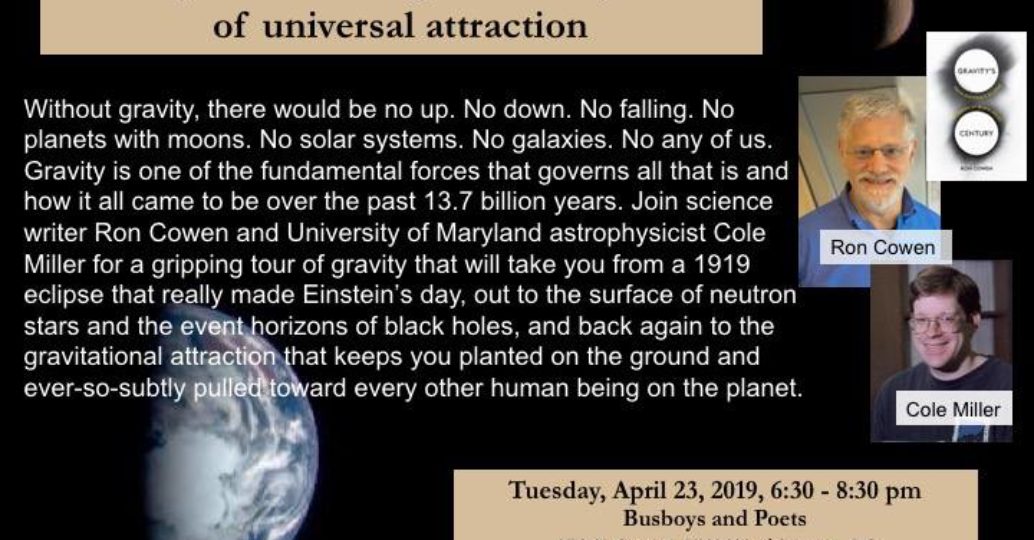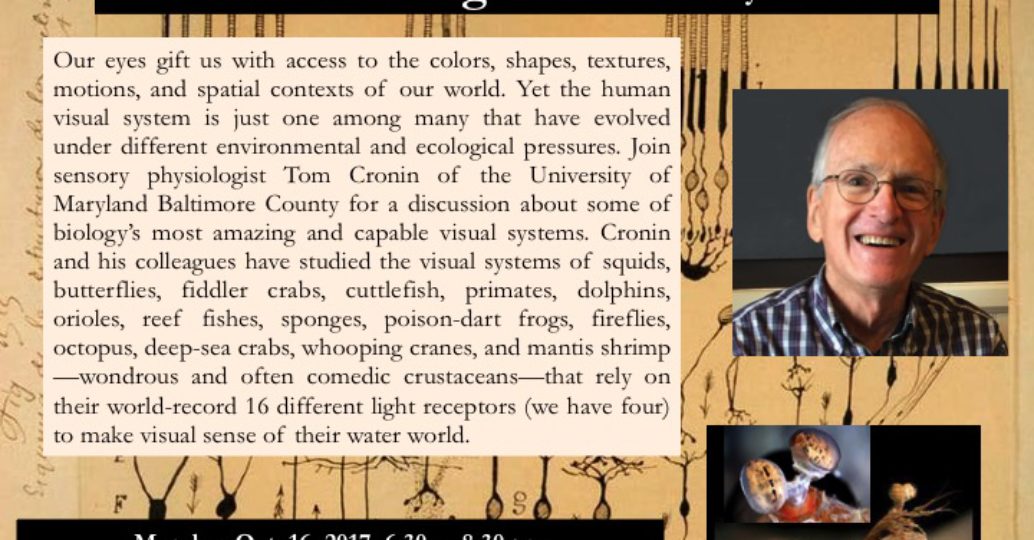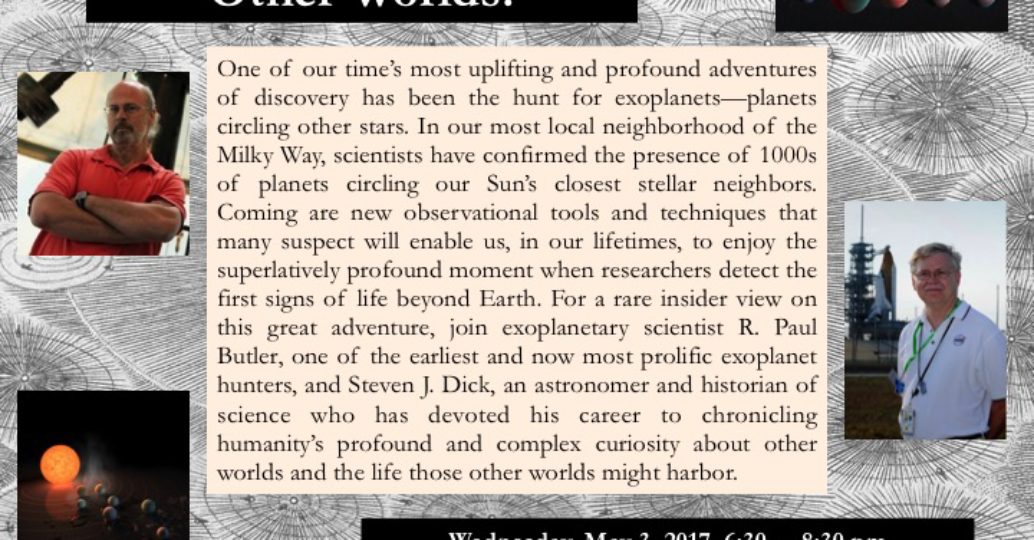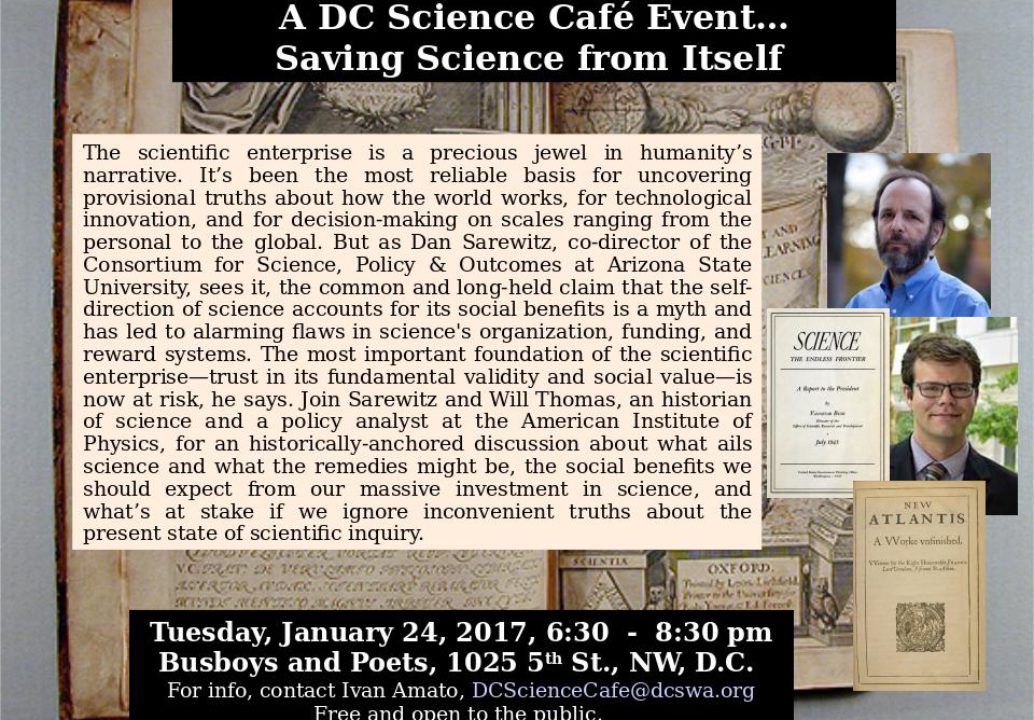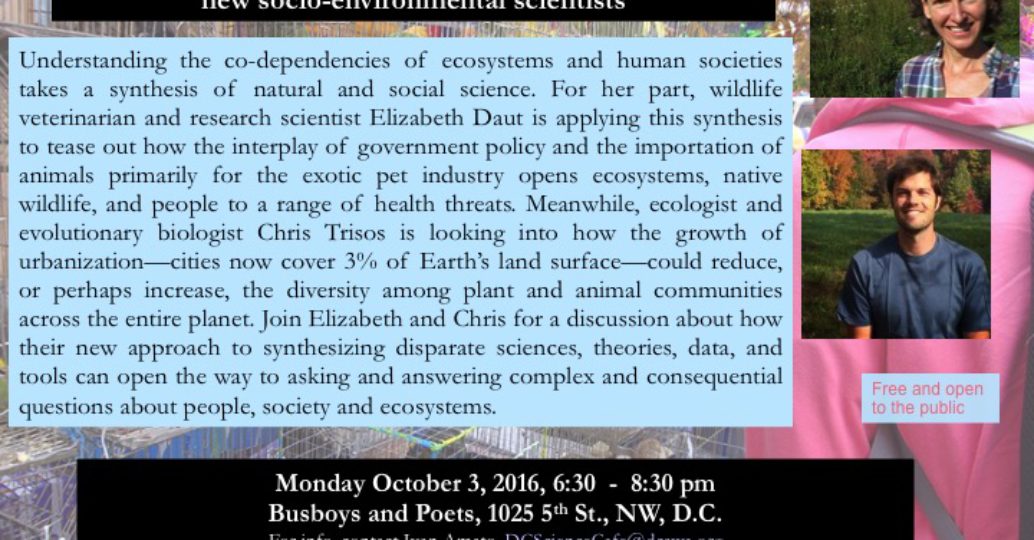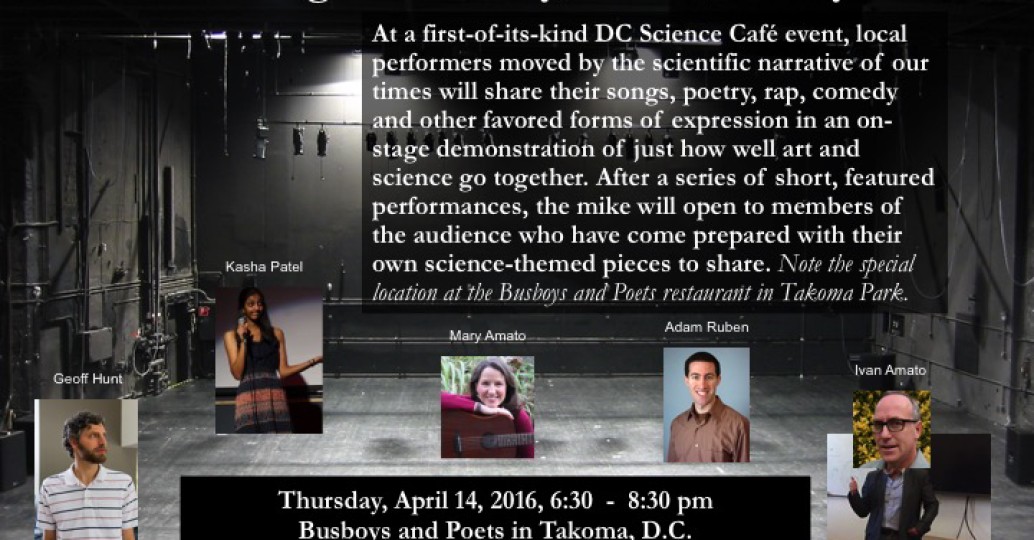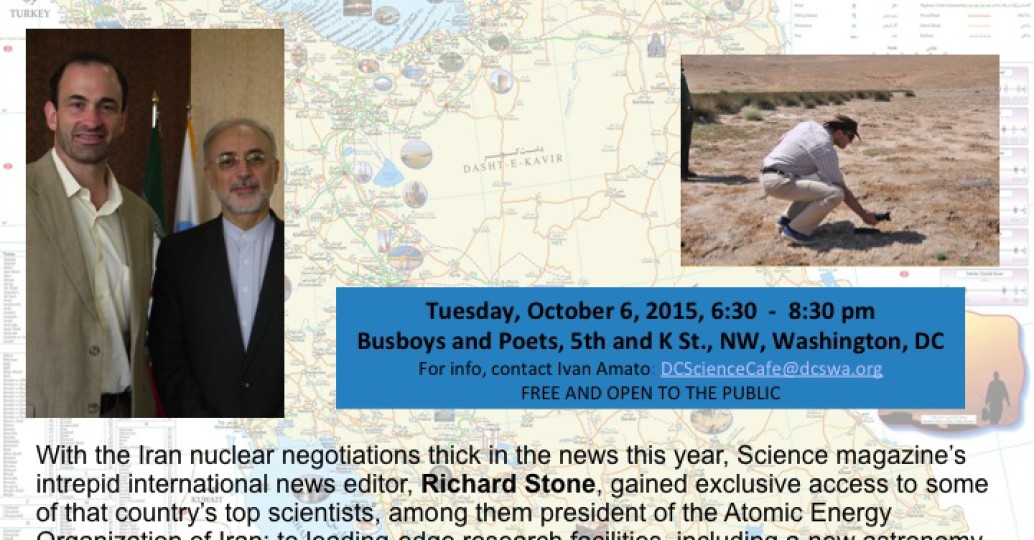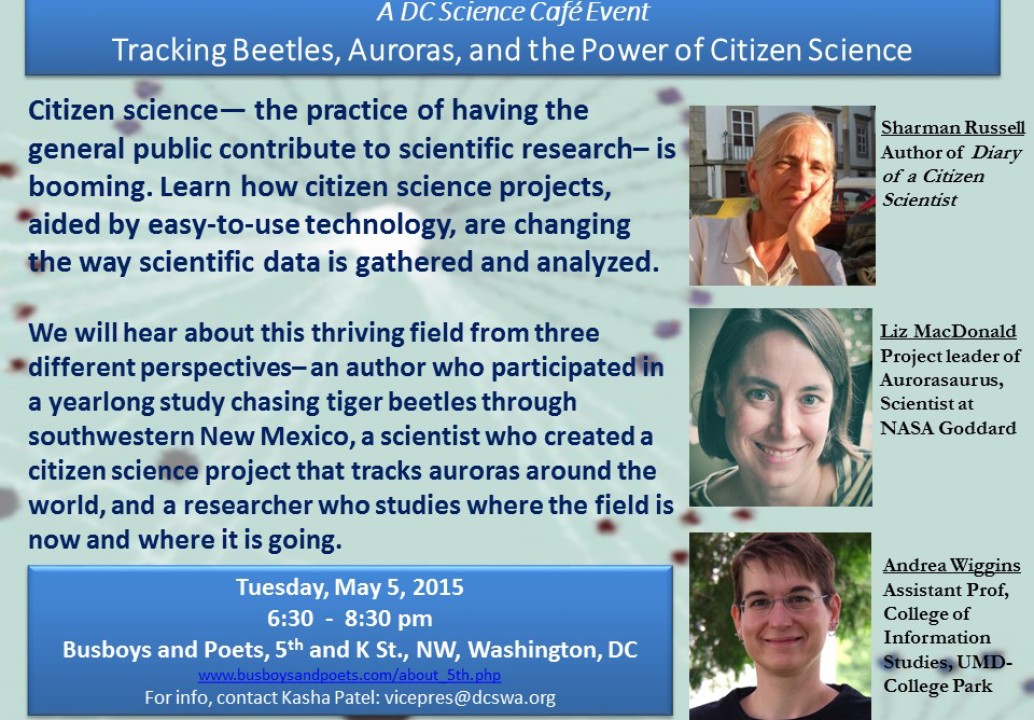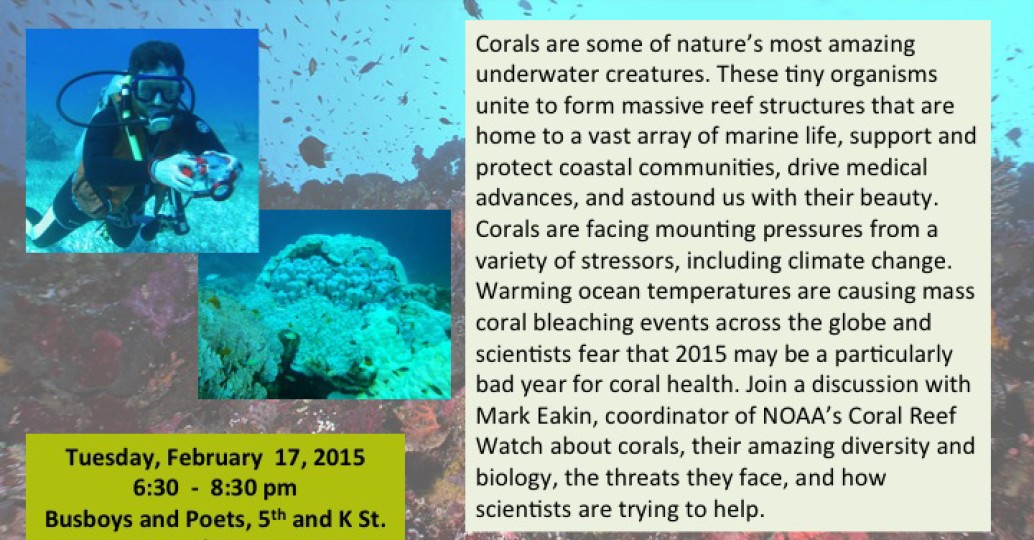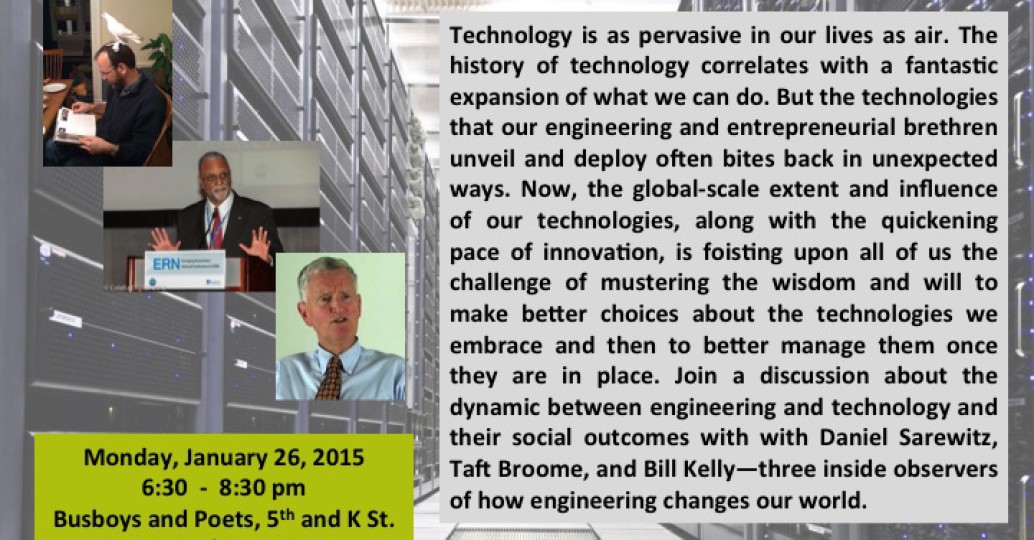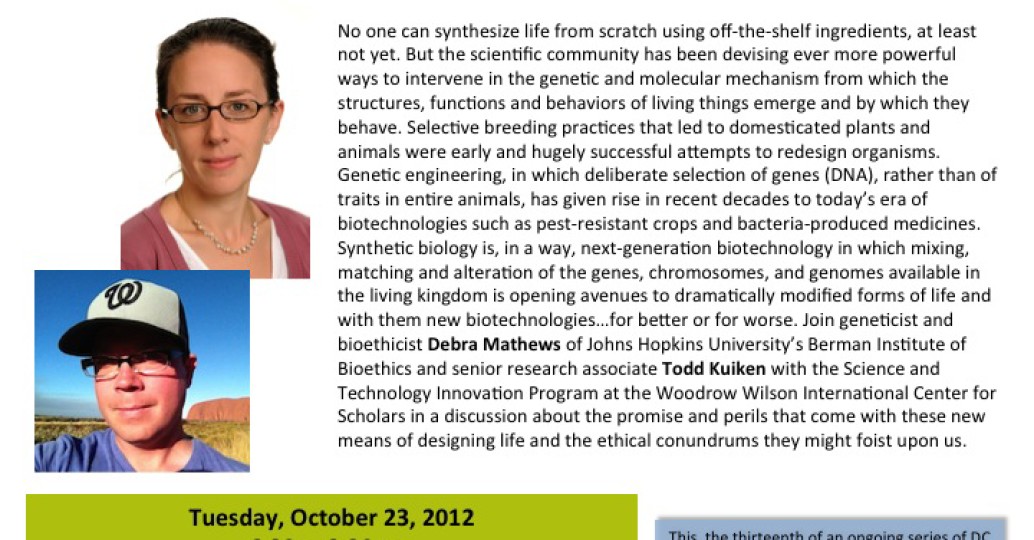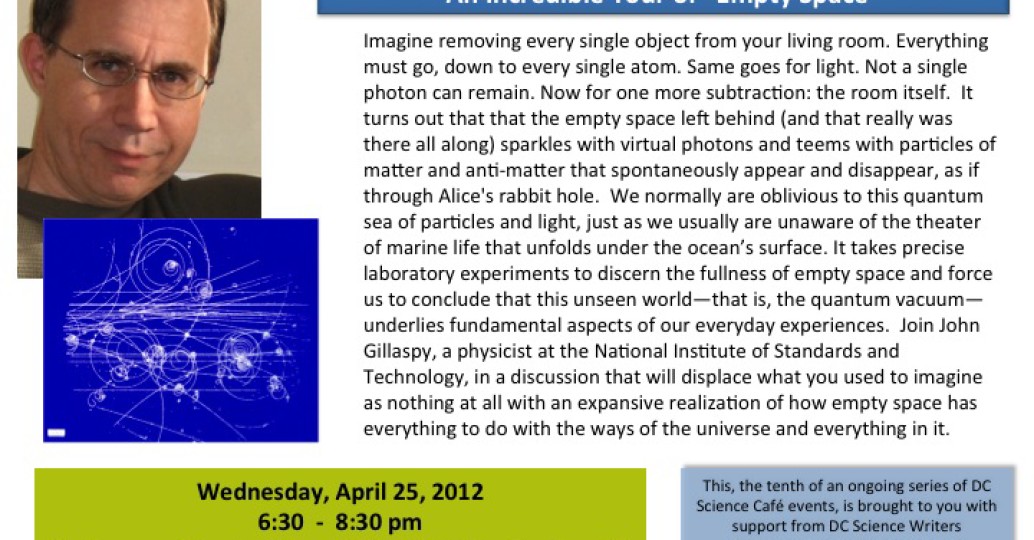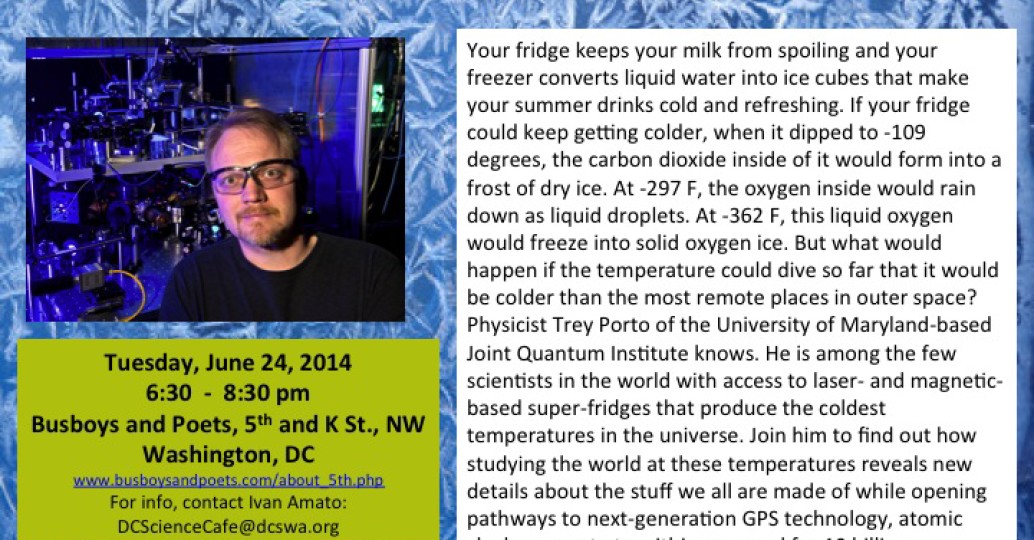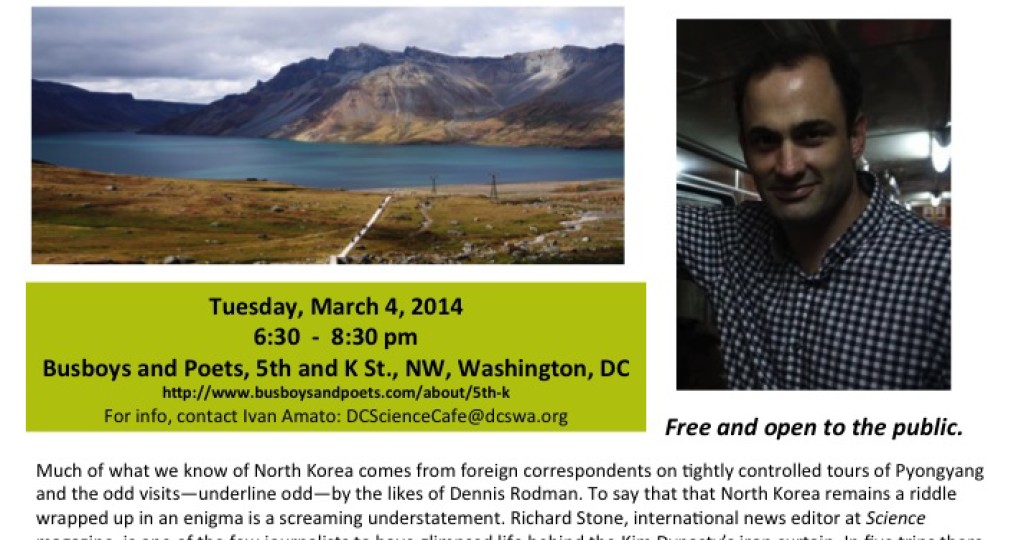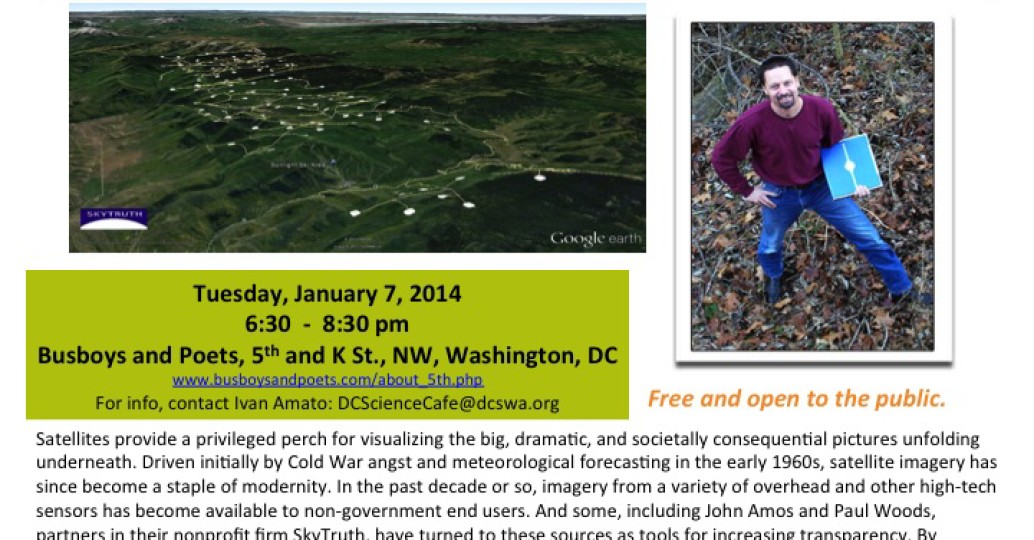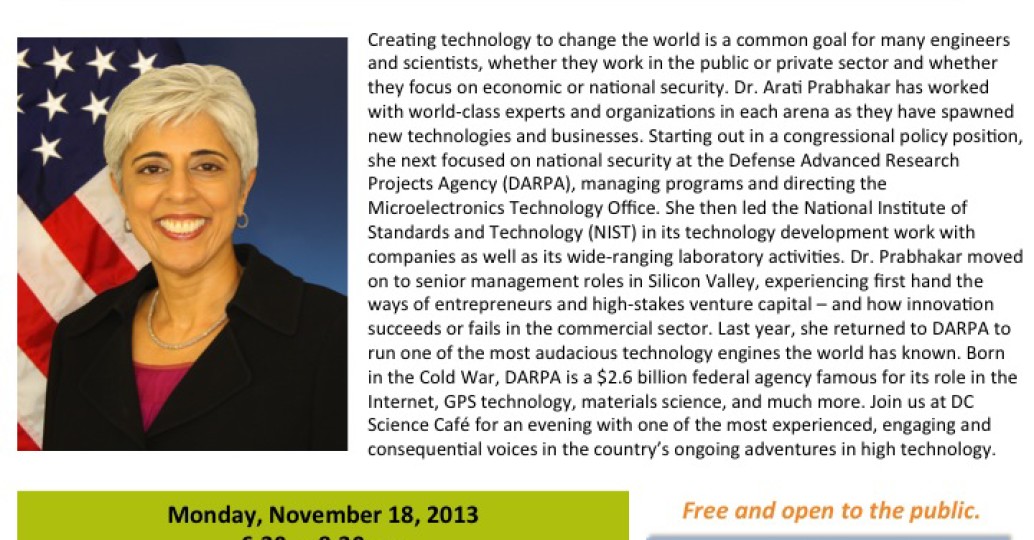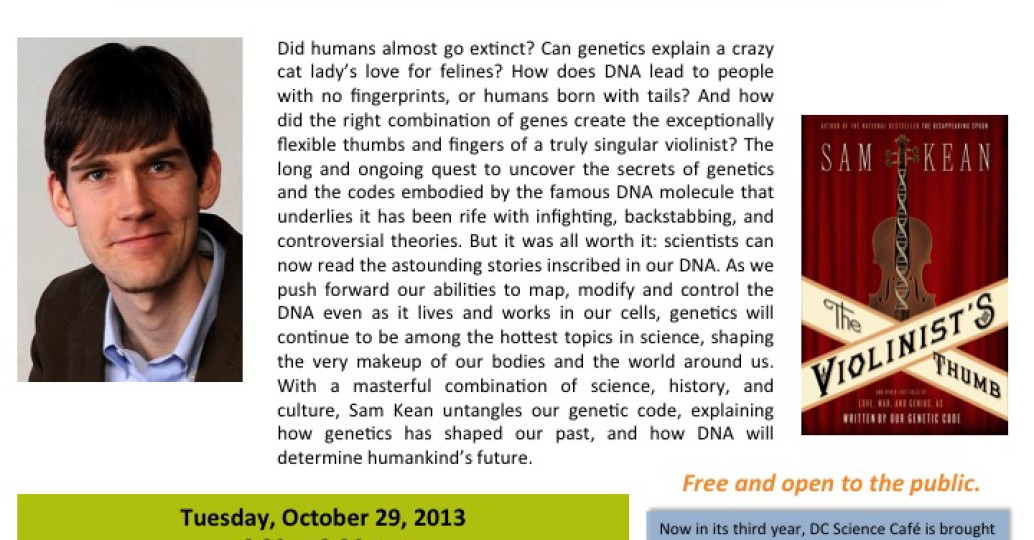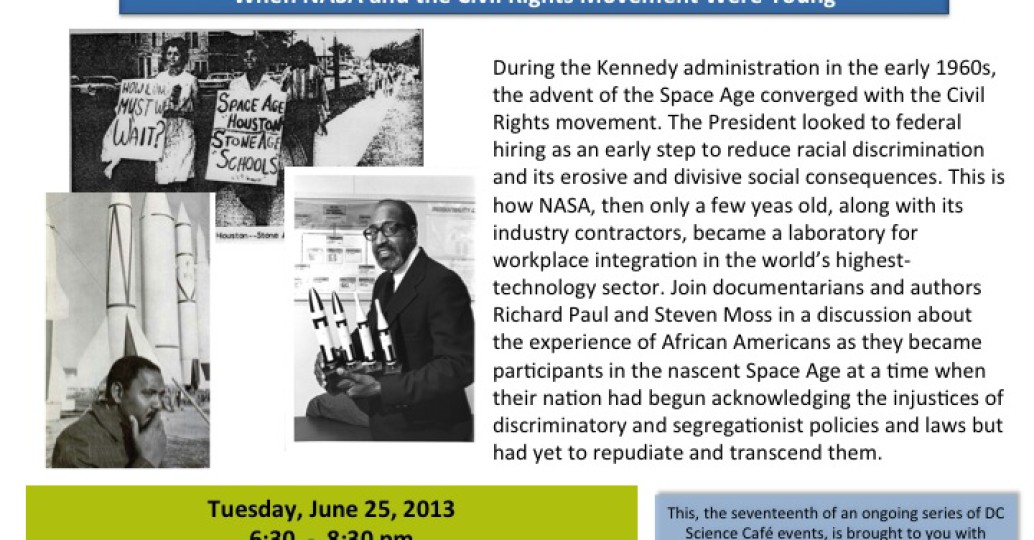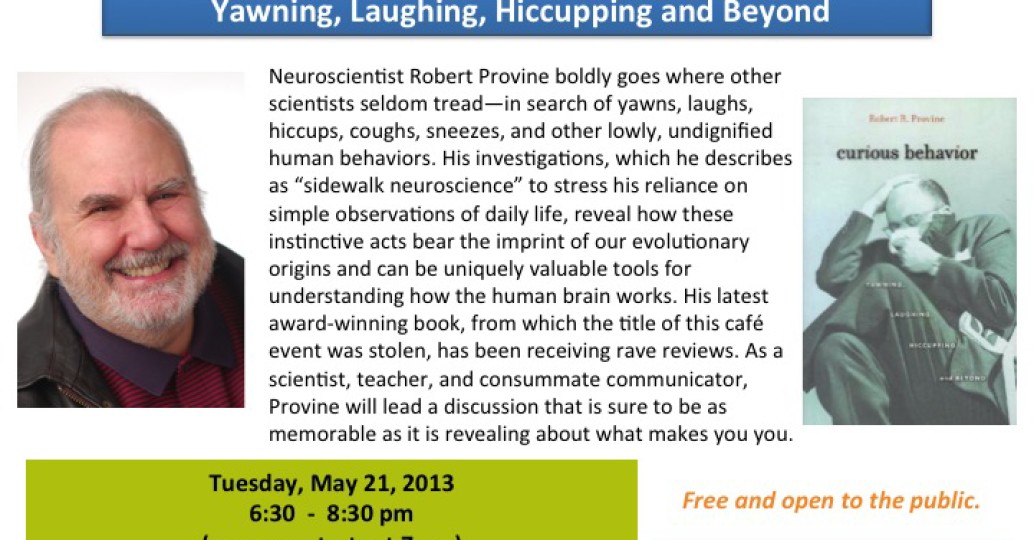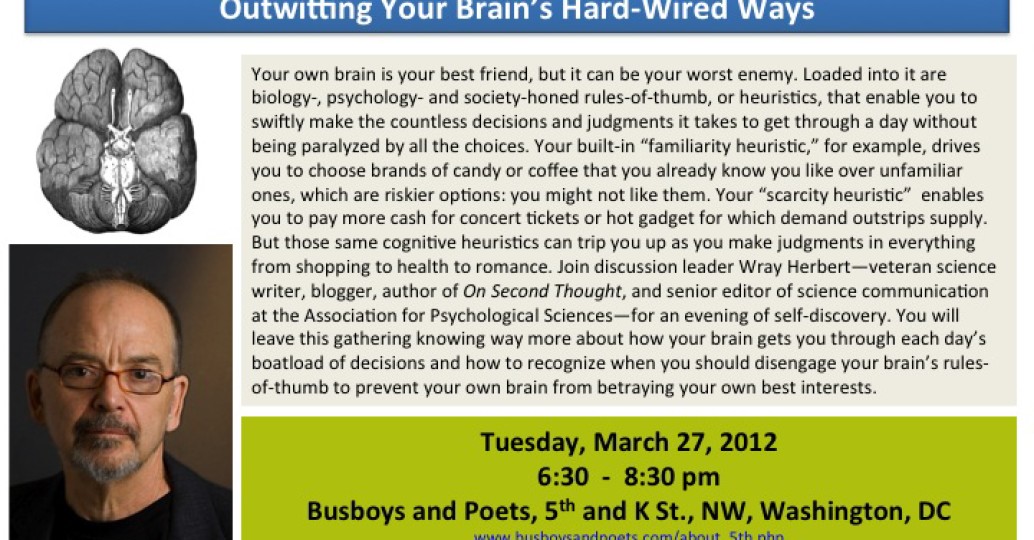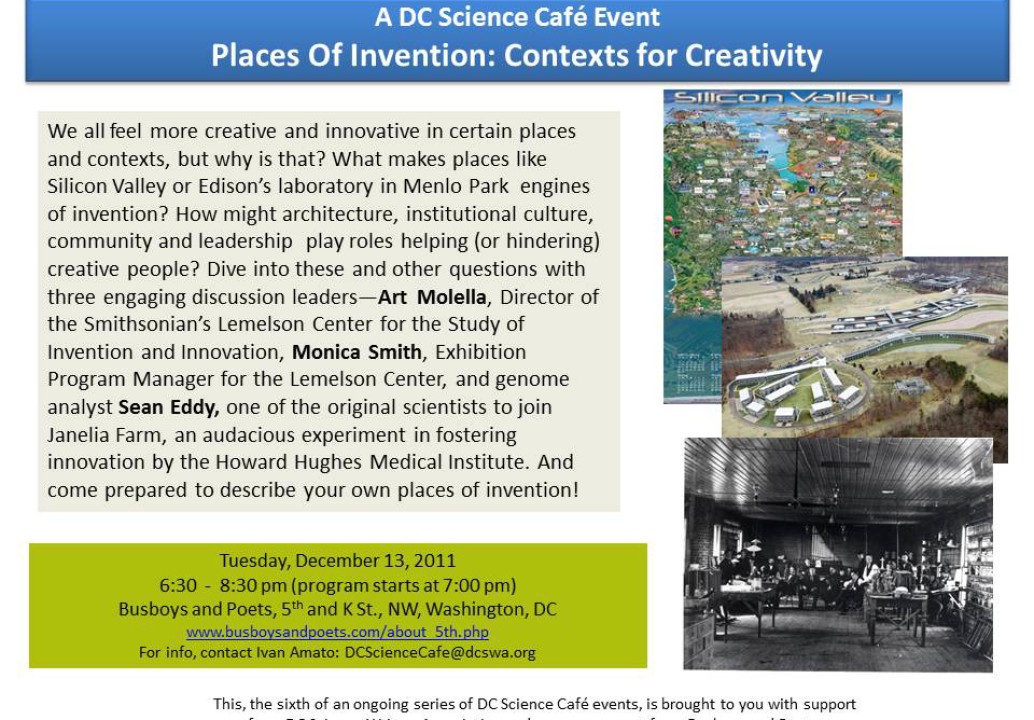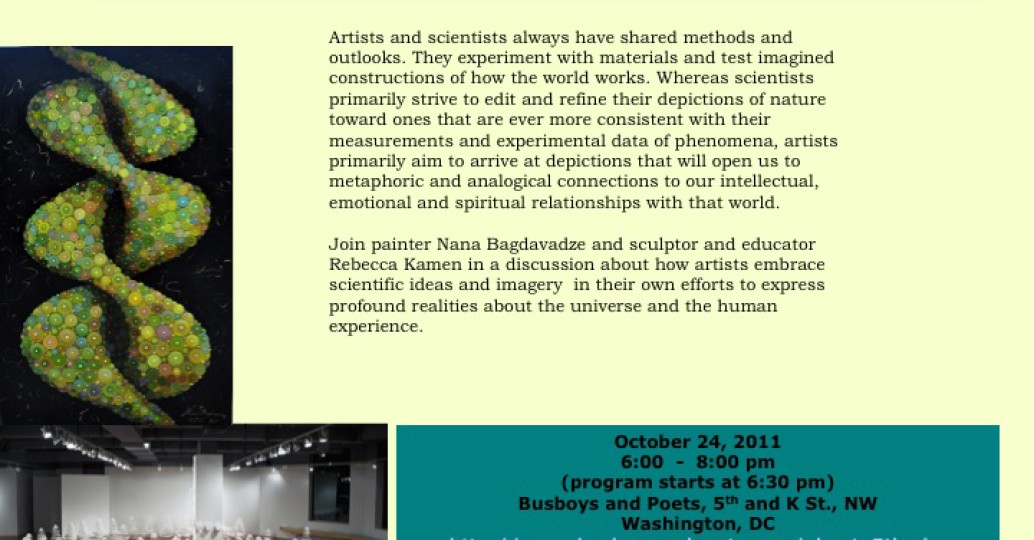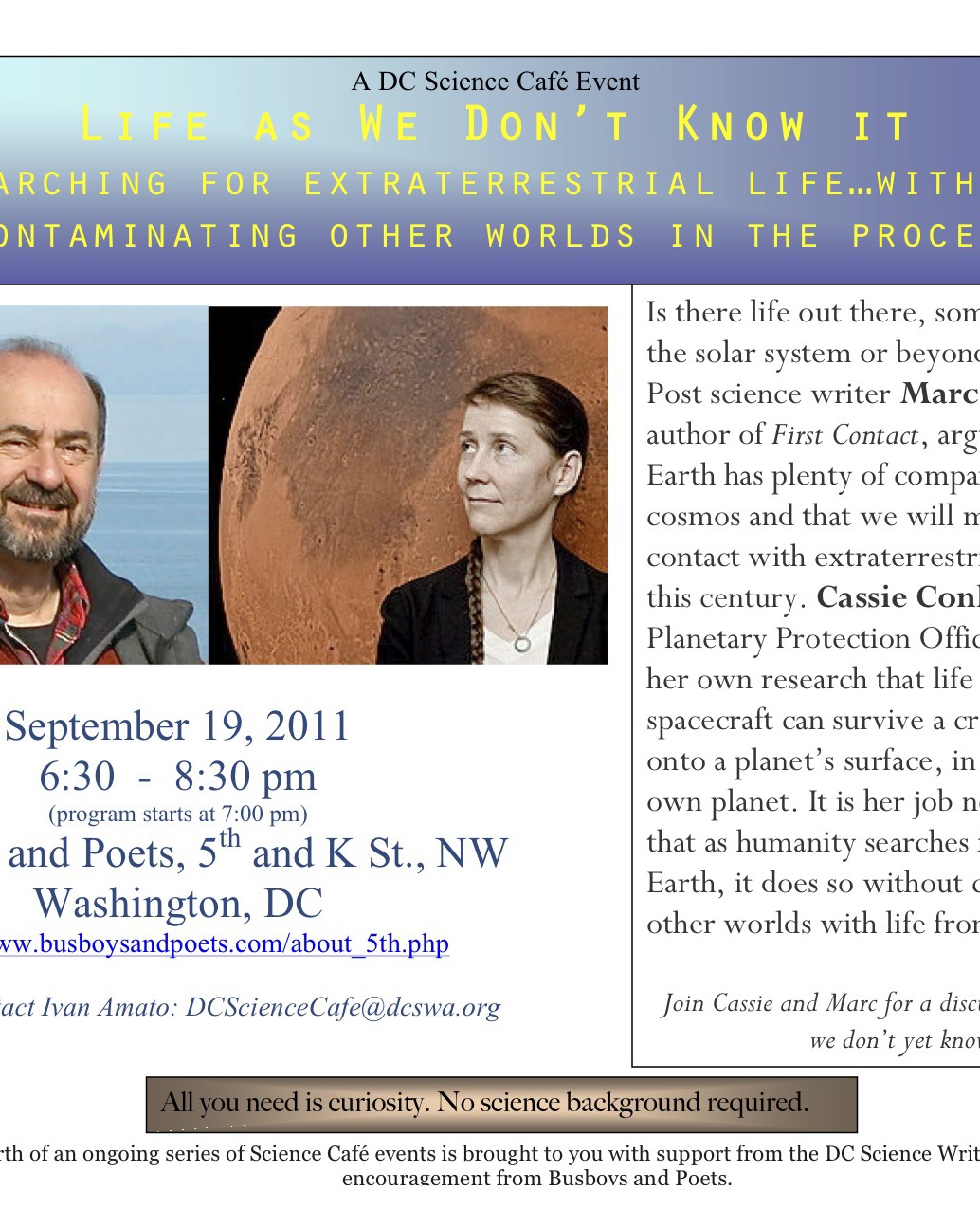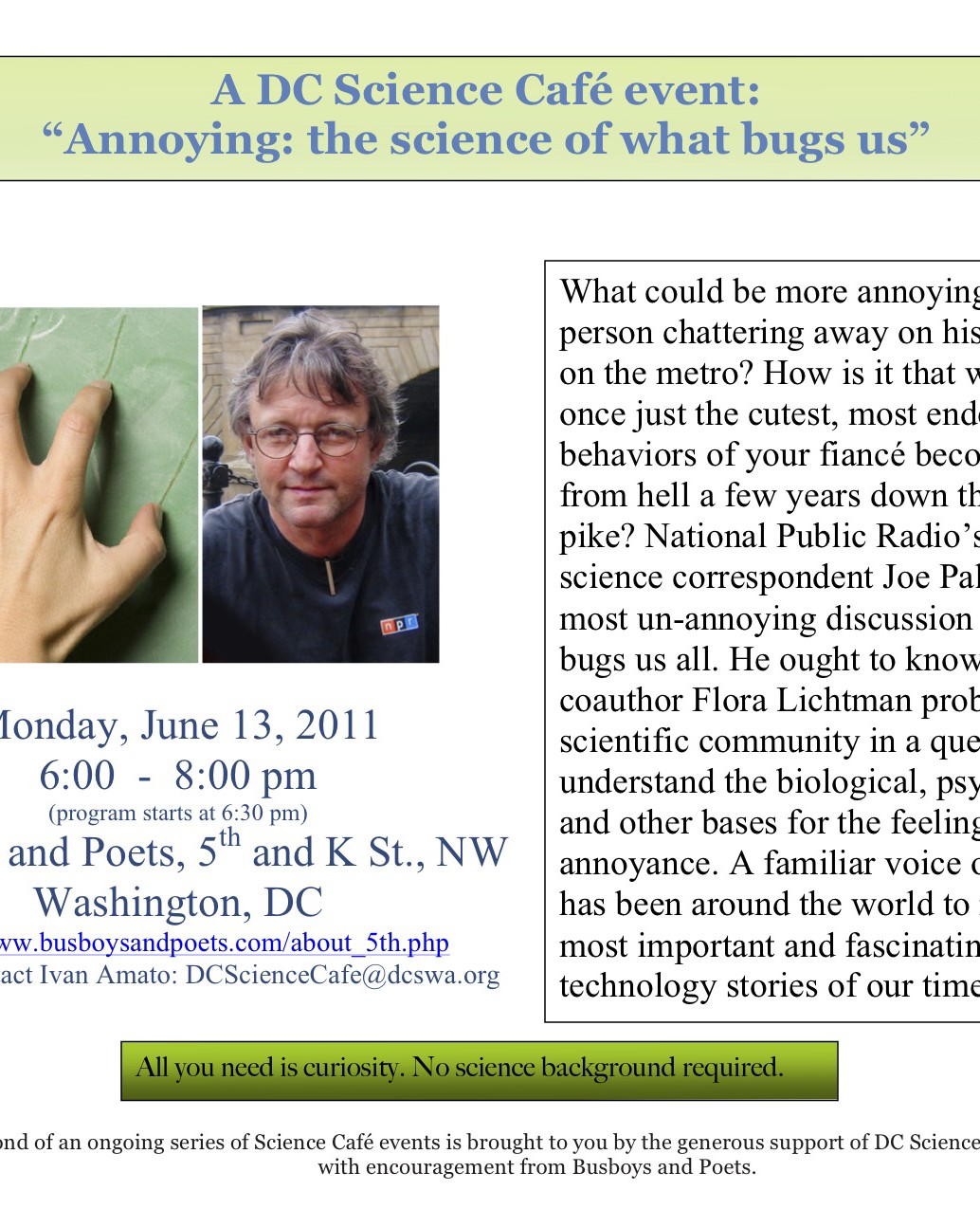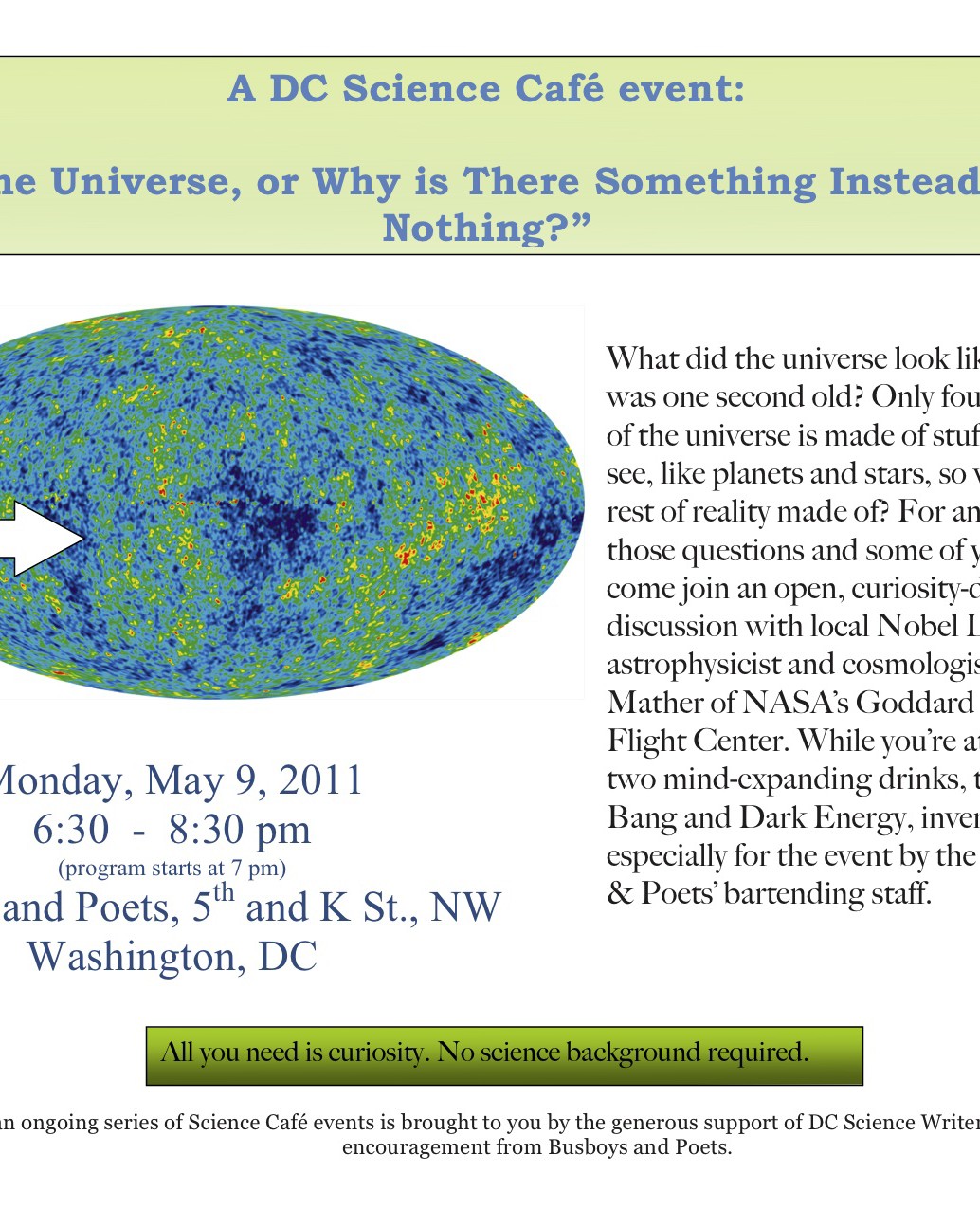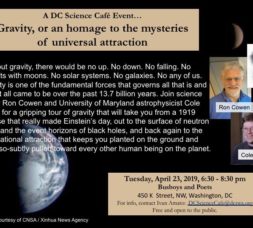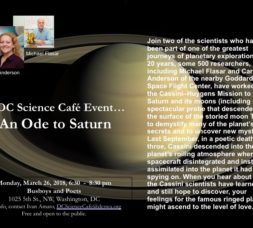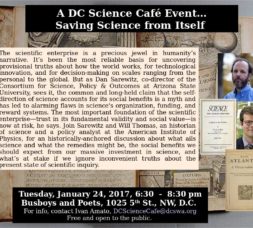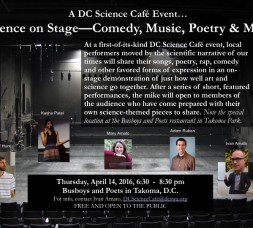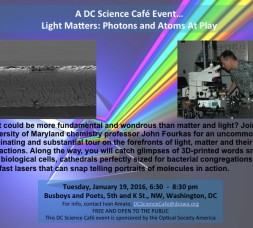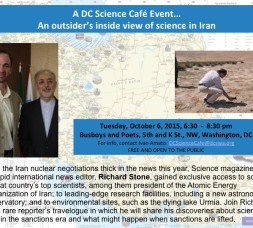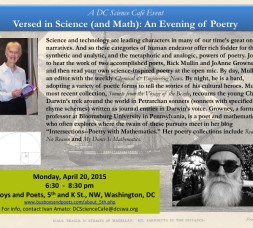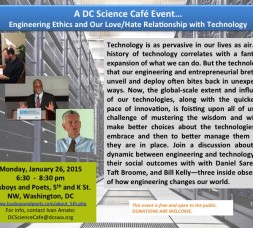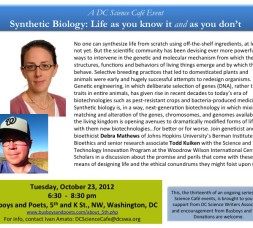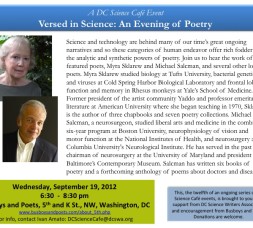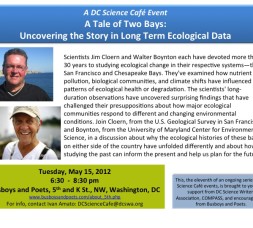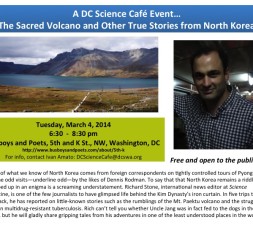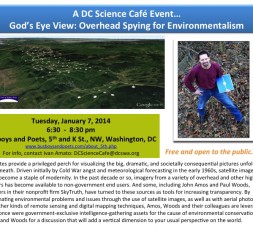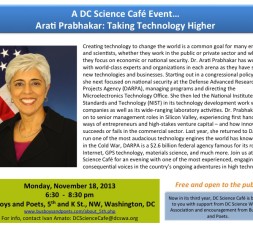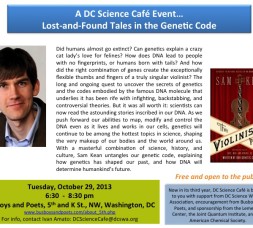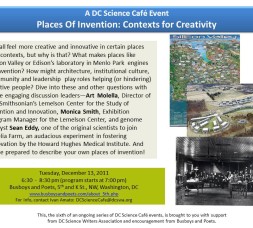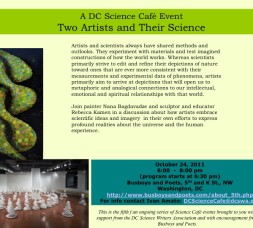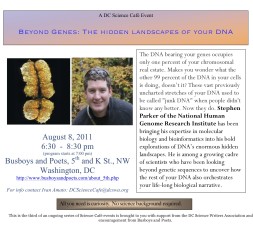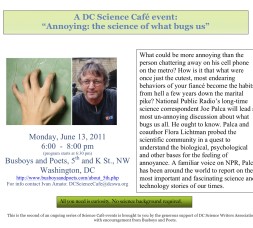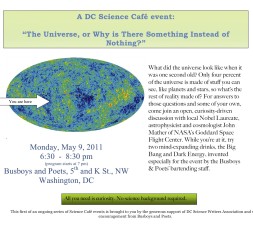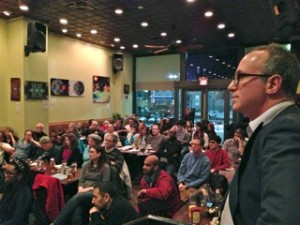
The DC Science Café, founded by Ivan Amato in 2011, provides an opportunity for the public to become directly engaged in open, facilitated, curiosity-driven discussions about the scientific discoveries and technologies that fascinate, enlighten, amuse, befuddle, terrify and otherwise move us. These discussions will cover everything from the origin of the universe to the ethical dilemmas that accompany new reproductive technologies to the magical materials still latent within the Periodic Table of the Chemical Elements.
Our aim is to give the general public an opportunity to participate in lively and important discussions about the consequential scientific discoveries and issues of our times. No science background required!
DC Science Cafés happen roughly every two months at Busboys and Poets’ 5th and K St location near downtown Washington, D.C. For more information or to be notified about future events, contact Ivan Amato, founder and facilitator of DC Science Café, at DCScienceCafe@dcswa.org
Upcoming event:
Gravity, or an homage to the mysteries of universal attraction
Without gravity, there would be no up. No down. No falling. No planets with moons. No solar systems. No galaxies. No any of us. Gravity is one of the fundamental forces that governs all that is and how it all came to be over the past 13.7 billion years. Join science writer Ron Cowen and University of Maryland astrophysicist Cole Miller for a gripping tour of gravity that will take you from a 1919 eclipse that really made Einstein’s day, out to the surface of neutron stars and the event horizons of black holes, and back again to the gravitational attraction that keeps you planted on the ground and ever-so-subtly pulled toward every other human being on the planet.
Most recent event:
Picturing Science: the joys and concerns of scientific image-making
Science is about revealing what has never been seen and discerned before. Visual deptictions of nature date back tens of thousands of years in cave paintings. But the tools and techniques that today’s researchers, designers, and artists now can wield to compose visual representations of scientific discoveries has led to a veritable and always expanding Louvre of gorgeous and telling scientific imagery. This same facility in image-making also has opened up conundrums regarding the boundaries of science, art, and sound representation. Join a discussion with three professionals who have been wrestling with those boundaries even as they have been expanding them.

